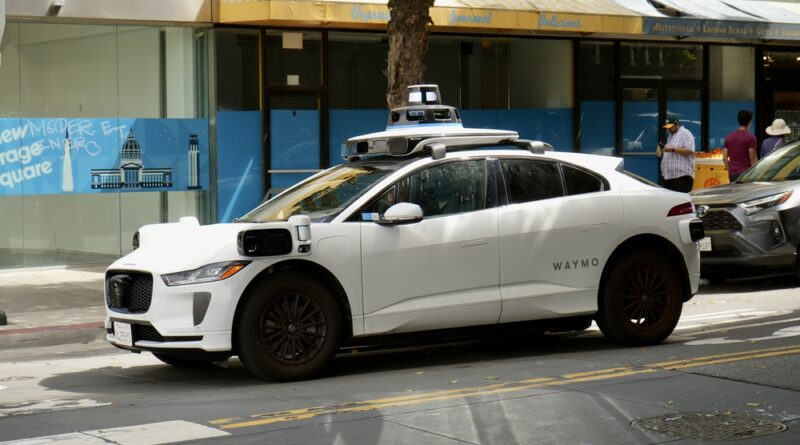Tesla’s Austin Robotaxi Test Puts a Spotlight on Waymo’s Under-Valued Lead
Tesla’s first commercial robotaxi service has begun limited operations in downtown Austin. Fewer than two dozen self-driving Model Y vehicles now shuttle pre-approved passengers between 6 a.m. and midnight, each ride priced at a symbolic $4.20. Every trip still includes a human safety monitor, and the temporary geofence spans only a slice of the city. Although the pilot marks an important milestone for the electric-vehicle maker, its modest scale contrasts sharply with the lofty expectations baked into Tesla’s roughly US $1 trillion market valuation.
Across the country, Alphabet-owned Waymo is expanding at industrial pace. The company’s fully driverless Jaguar I-Pace and Hyundai Ioniq 5 robotaxis now cover five metropolitan areas, most recently adding Atlanta, with a fleet of about 1,500 vehicles and plans to more than double that number by late 2026. A funding round last year valued Waymo at roughly US $45 billion, less than five percent of Tesla’s worth, yet its service already operates at national scale.
Valuation Gaps and Investor Math
Tesla currently trades near 150 times forward earnings, a multiple that dwarfs Alphabet’s 18.5 times and the single-digit ratios of legacy automakers. Much of that premium rests on robotaxi hopes: some Wall Street models attribute more than half of Tesla’s intrinsic value to an eventual autonomous ride-hailing business.
Waymo’s private valuation, by comparison, looks increasingly conservative. Recent sell-side research has floated valuations in the US $100–150 billion range once the unit is carved out or taken public, implying that public markets may be undervaluing Alphabet’s autonomy crown jewel by tens of billions of dollars.
Diverging Technology and Business Models
Tesla’s approach relies on a camera-only perception stack and a software update path that could, in theory, convert millions of existing cars into revenue-generating robotaxis overnight. The upside is enormous, but the method also courts higher margin-of-error risks: bright sunlight, lens obstructions and unpredictable street layouts have already produced viral clips of erratic manoeuvres in Austin.
Waymo uses a more expensive hardware array multiple lidars, radars and cameras fused with HD mapping. The configuration has logged tens of millions of fully driverless kilometres without a safety driver since 2020 and enjoys a growing partnership with Uber. It is capital-intensive, yet regulators have signalled greater comfort with the extra redundancy.
Scale Versus Speed
Tesla’s defenders note that Austin is merely a starting point. Because the vehicles are street-legal production cars, each software revision can be stress-tested in a live fleet, allowing rapid iteration. If the Cybercab, Tesla’s purpose-built steering-wheel-less shuttle, enters volume production in 2026 as planned, the company could pivot from pilot to nationwide rollout at unprecedented speed.
Waymo, meanwhile, is methodically adding cities only after exhaustive mapping and public-safety reviews. That deliberate strategy has yielded fewer viral mishaps and smoother regulatory relations but slows geographic expansion.
Regulatory and Competitive Undercurrents
The two companies face different regulatory headwinds. Tesla’s pilot has already prompted inquiries from state and federal safety agencies after footage appeared to show vehicles ignoring traffic rules. Waymo contends with local pushback in San Francisco and Phoenix from residents worried about traffic snarls, yet it continues to secure permits.
Competitive pressure is also intensifying. Amazon-backed Zoox is testing in Las Vegas; Cruise, after resetting following high-profile incidents, aims to relaunch in a new city by year-end; Hyundai-Aptiv joint venture Motional is progressing in Los Angeles. Yet none match Waymo’s operational scale today, and none match Tesla’s cachet with investors.
What the Numbers Suggest
At Tesla’s current valuation, investors assign premium credit for an autonomy future that exists only in pilot form. By contrast, Waymo’s proven, revenue-generating network enjoys a fraction of that valuation, despite broader service coverage, clearer regulatory compliance and a capital roadmap backed by Alphabet’s cash reserves.
If Tesla’s Austin experiment stumbles, the gap could narrow quickly. If it succeeds, Tesla’s multiple might appear less stretched, but Waymo’s strategic value would still rise as the sole at-scale competitor.
Bottom Line
Tesla’s publicity magnet ensures every new robotaxi ride trends on social media, magnifying both triumphs and flaws. Yet the quiet progress of Waymo underscores a market disconnect: the company already offering fully driverless rides to paying customers in multiple cities is valued at barely one-twentieth of its more celebrated rival.
For investors seeking exposure to autonomous mobility, the message is clear. Tesla’s trillion-dollar bet commands headlines, but Alphabet’s less-hyped jewel may prove the real bargain as the robotaxi race accelerates from test laps to national deployment.
Photo Credit: DepositPhotos.com

